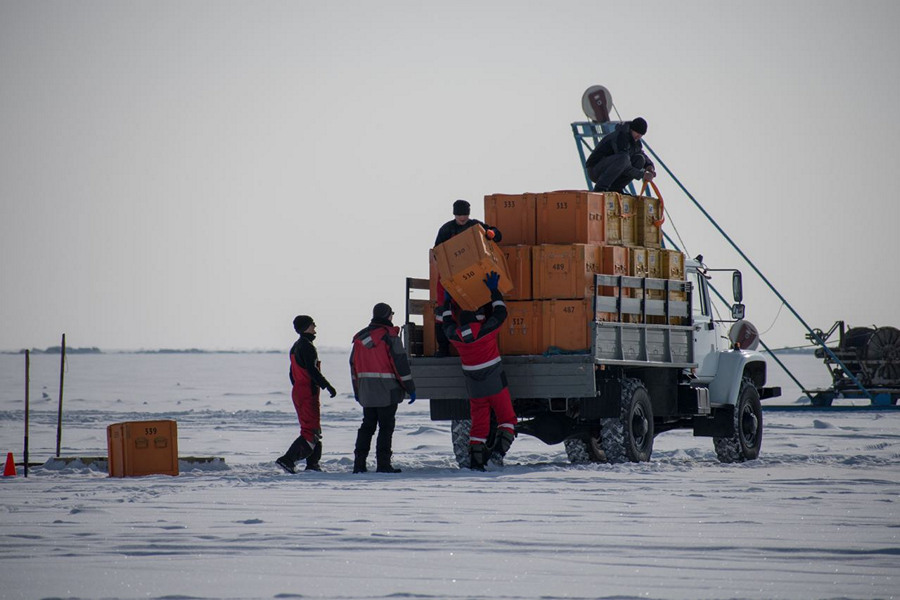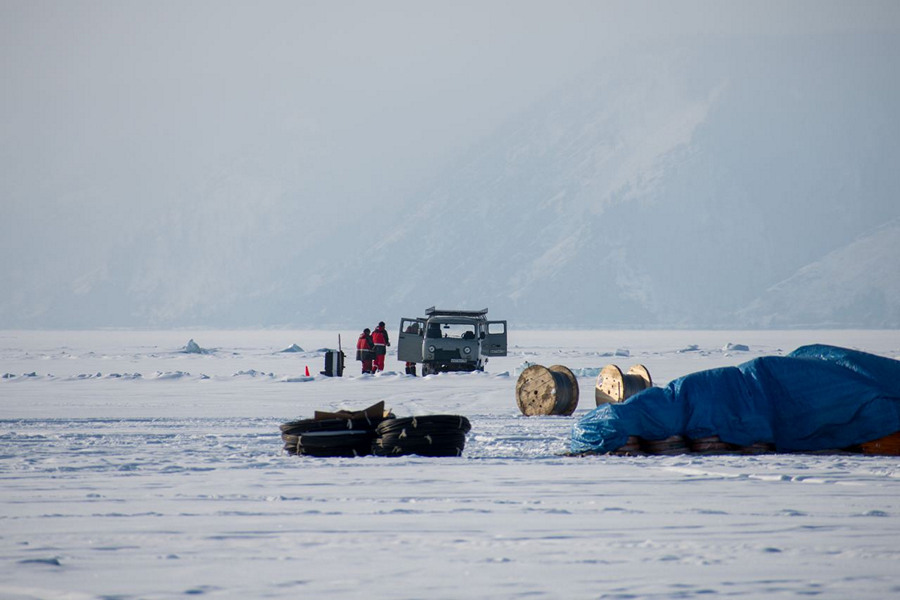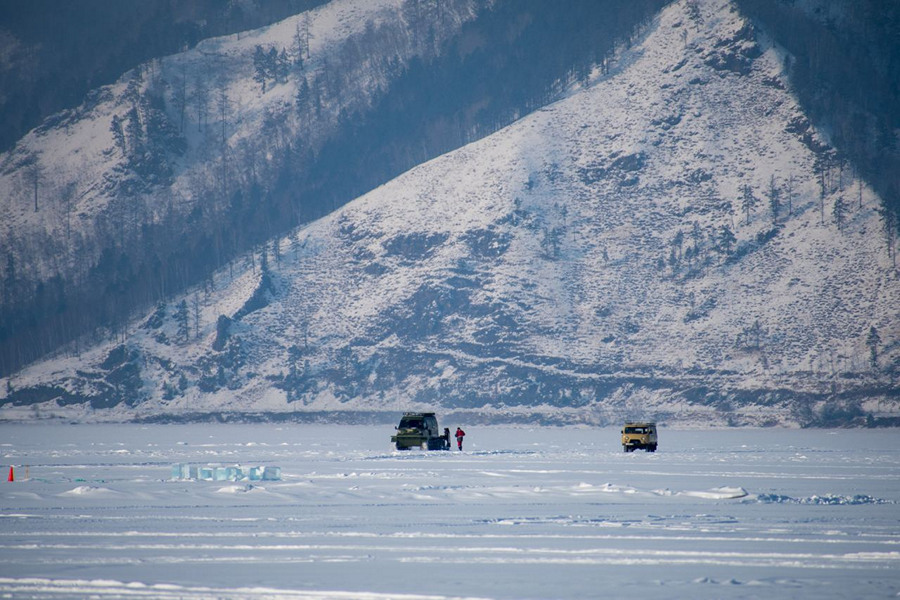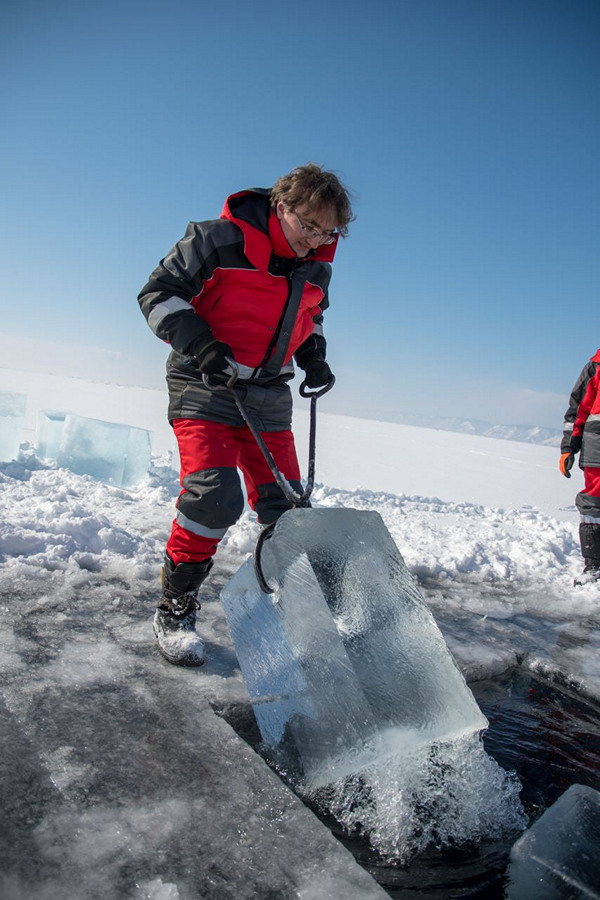Launching the Next Baikal Expedition to Construct the Neutrino Telescope
On 17 February 2022, the next expedition to construct Baikal-GVD, the deep underwater neutrino telescope of a cubic-kilometre scale, has been launched. During about two months, the Baikal-GVD collaboration intends to deploy two new clusters, repair and upgrade those already installed, and proceed with developing the optical data transmission system within the facility.

The Baikal-GVD Neutrino Telescope is aimed at detecting and studying ultra-high-energy neutrino fluxes from astrophysical sources. Using it, scientists plan to scrutinize not only processes with huge energy releases that occurred in the distant past but also the evolution of galaxies, formation of supermassive black holes, and mechanisms of particle acceleration.
The Baikal Neutrino Telescope is a neutrino detector located in Lake Baikal 3.6 km away from the shore, at a depth of about 1300 m. This unique scientific facility is an important tool of multimessenger astronomy, a new powerful method to investigate the Universe. Baikal-GVD is one of the three neutrino telescopes across the world and, along with IceCube at the South Pole and ANTARES (now KM3NeT) in the Mediterranean Sea, is part of the Global Neutrino Network (GNN).
 Photo by Bair Shaybonov | Baikal-GVD
Photo by Bair Shaybonov | Baikal-GVD
In 2021, the Baikal-GVD telescope became the largest in the Northern Hemisphere and the second in size in the world. Today, the detector comprises 8 clusters spaced 300 m away from each other. One cluster has 8 vertical strings, with 36 optical modules on each. At present, the effective volume of the telescope for detecting astrophysical neutrinos with the energy in the range of one PeV is 0.4 cubic km, with the project volume of one cubic km to be achieved by 2027. “It seems that this year the weather and ice condition are favourable for the expedition, and we hope that all our goals will be reached,” remarks Igor Belolaptikov, the Head of Expedition Management, a researcher of the Dzhelepov Laboratory of Nuclear Problems.
Officially launched in March 2021, the telescope is operating in a standard mode. Data from the facility are transmitted to the computational centre and analyzed by collaborators.
 Photo by Bair Shaybonov | Baikal-GVD
Photo by Bair Shaybonov | Baikal-GVD
Last year, at the beginning of December, two world’s largest neutrino telescopes, IceCube in the South Hemisphere and Baikal-GVD in the Northern Hemisphere, detected astrophysical neutrino candidates from one possible source (radio blazar flare). “The Baikal project came to a fascinating stage becoming, along with the neutrino telescopes IceCube and ANTARES (now KM3NeT), a full-fledged participant in neutrino sky mapping,” says Grigory Domogatsky (INR of RAS), the Head of the Collaboration, a corresponding member of RAS.
The Baikal-GVD Neutrino Telescope is being constructed by concerted efforts of the international collaboration with the leading role of the Institute for Nuclear Research of the Russian Academy of Sciences (INR of RAS) (Moscow), the founder of this experiment and the direction “high-energy neutrino astronomy” in the world, and of the Joint Institute for Nuclear Research (JINR) (Dubna). More than 70 scientists and engineers from 11 science centres of Russia, Germany, Poland, the Czech Republic, Slovakia, and Kazakhstan are involved in the project.
The 2022 expedition is organized by the Institute for Nuclear Research of the Russian Academy of Sciences (INR of RAS) (Moscow) and the Joint Institute for Nuclear Research (JINR) (Dubna).
In the photo: arranging the ice camp on the Baikal ice at the beginning of the expedition.
 Photo by Bair Shaybonov | Baikal-GVD
Photo by Bair Shaybonov | Baikal-GVD
 Photo by Bair Shaybonov | Baikal-GVD
Photo by Bair Shaybonov | Baikal-GVD
 Photo by Bair Shaybonov | Baikal-GVD
Photo by Bair Shaybonov | Baikal-GVD

